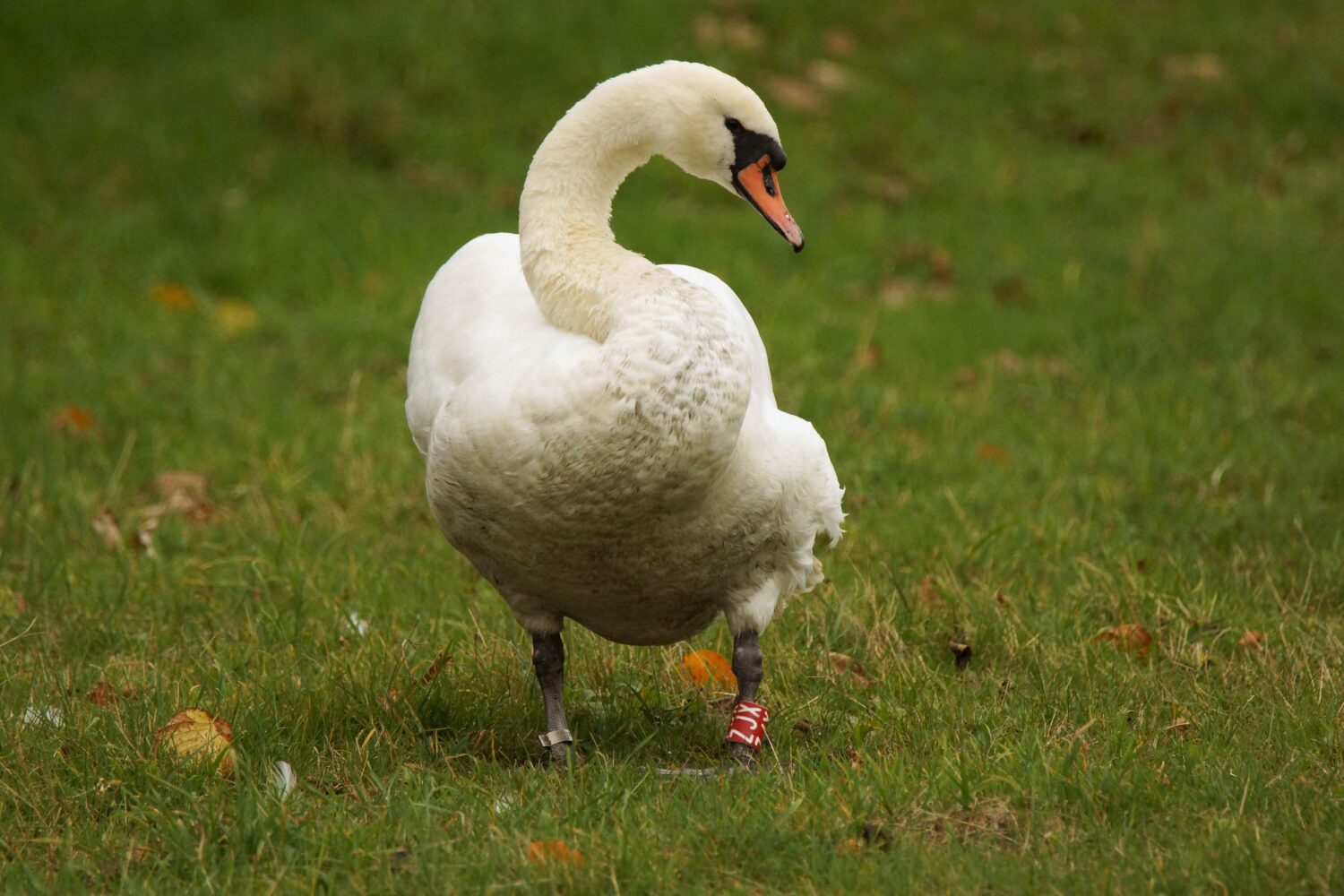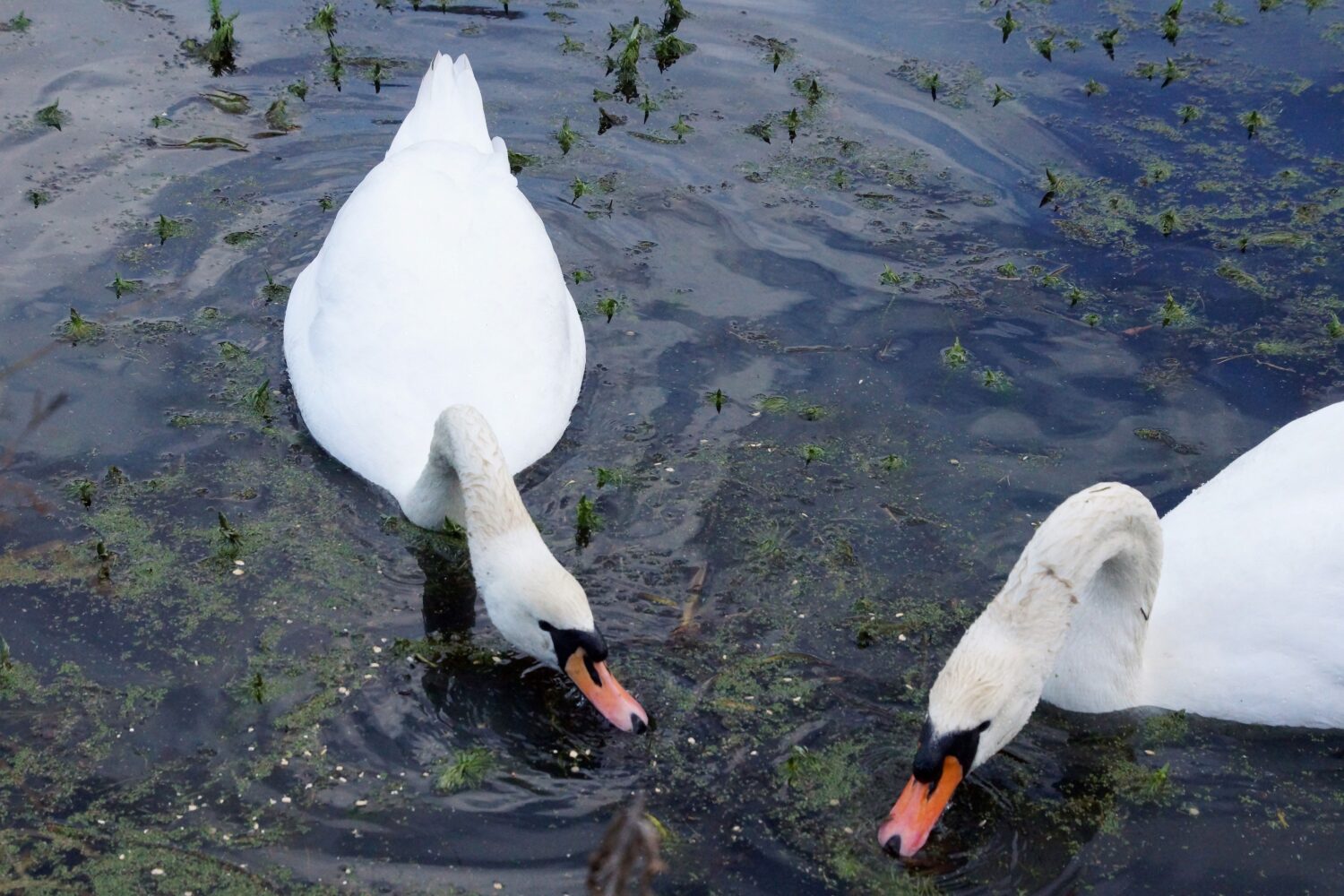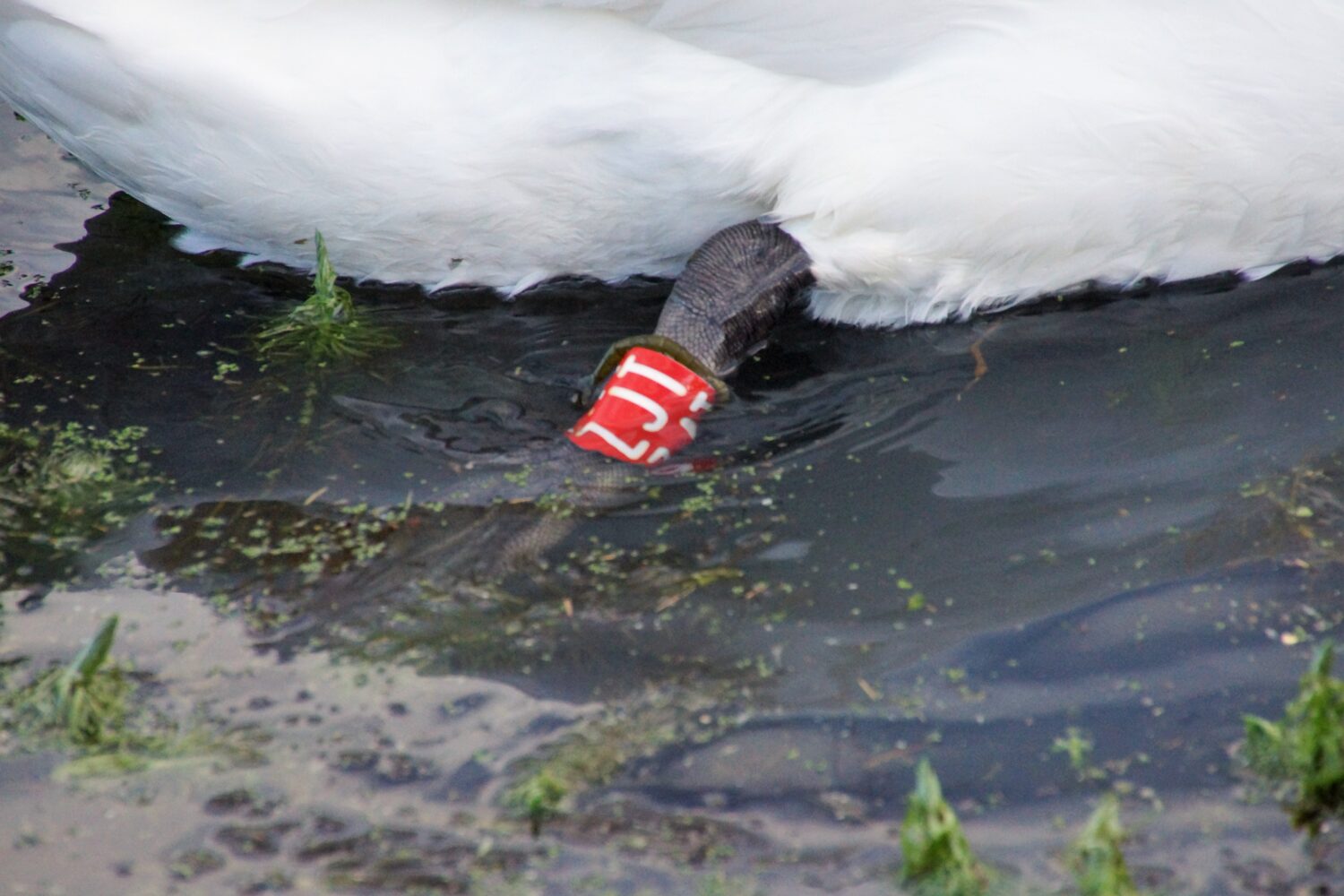Explore a December update from North East ornithologist, Phil Hanmer, featuring scarce tits and the shenanigans of swans.
Within the limitations imposed by the pandemic and the weather; the British Trust for Ornithology (BTO) has asked ringers to take part in a pilot winter ringing initiative by undertaking ringing at the same site over at least six sessions this winter. The idea is to generate survival trends, age ratios; and test site fidelity. There is a particular concern at present about declining numbers of finches and our rarer tits (Willow & Marsh) and the winter site, near Longhorsley, that I have used for the last few years lends itself to this study.
We started towards the end of November and on an exceptionally dull day caught 61 birds (56 new and 5 retraps). Within the new birds, there were 2 juvenile Marsh Tits and an adult Willow Tit; confirming that the Marsh Tits had bred close-by. There were also Tree Sparrows, Blue Tit, Great Tit, 2 juvenile Nuthatch, Bullfinch, Goldcrest, Coal Tit, Dunnock, Treecreeper and Robin. All the retraps were of interest (as this was the first session at the site since last winter) and the first was a Willow Tit first ringed on the 2/2/18; there was also a Blue Tit from Dec 2018, a Nuthatch from Dec 2019, a Great Tit from Dec 2019 and finally a Coal Tit from 3/1/20 (the last previous session at the site). The next session at the very end of November caught us 40 birds (30 new and 10 retraps). Chaffinch was added as a new species and another new juvenile Marsh Tit was captured. Turning to the retraps the very first bird was a Willow Tit originally ringed on the 1/12/19; there was also a Coal Tit, a Great Tit both from December 2018; a Blue Tit from Dec 2019 and another from November 2018. All this retrap information helps the BTO build a picture of the survival of our passerine birds.
The next session, in December, captured 50 birds (36 new and 14 retraps) although no new species were added it was becoming apparent that we were catching a higher proportion of ‘adult birds’ than juveniles of the year. This might indicate that nest productivity was poor this year (although there was no particular evidence of this from our own nest ringing) or that juveniles did not survive the summer and autumn as well as usual. Again some of the retraps proved interesting with two Coal Tits from November 2018, a Blue Tit from Dec 2018 and another from Dec 2019. There was a Coal Tit from Dec 2018 and also three Blue Tits and a Great Tit. Finally there was a Dunnock from Dec 2019. Another session squeezed in between the rain-clouds captured 43 birds (29 new and 14 retraps) and the new birds added both Goldfinch and Siskin to the different species. Included in the retraps was a Willow Tit not seen since 1/12/19; as well as Blue Tits from Feb. 2018 & Dec 2018; and a Great Tit from Dec 2019. If the weather permits we will persevere with this study as the winter continues (see attached picture of a Willow Tit and a Marsh Tit at this site).
Finally, I wanted to update you on the ‘Howick’ Mute Swans were some strange shenanigans seem to be going on; which we are only able to follow because these swans are regularly ringed and have large (relatively easy to read coloured darvick rings). Back in 2014 Female ZJX was on the arboretum pool with Male ZJP for the first time. They did attempt to breed but all 6 cygnets were likely taken by a Mink although they were much more successful in several subsequent years; most recently they raised 6 cygnets in 2019. In 2020 Fem ZJX and Male ZJP were present most of the year although they did not nest. Fem ZJX is now 17 years old; its not known for certain how old the male is as he was not ringed until he was already an adult in 2014. The pair left the pool in September 2020.
However, on the 10/11/20 the Male ZJP was back on the pool with female swan ZJT -who is his daughter from 2017. They were still present on the 16th November when the normal female ZJX tried to join them on the water but was repelled and was forced to stay up on the Bank in the pond field. There was another dispute on the 27th and eventually, the usual proper pair were back on the water together on the 28th but by the 30th there were again no swans present.


Daughter ZJT & Father ZJP © Phil Hanmer 
Daughter ring ZJT © Phil Hanmer
On the 20th December, the possibly incestuous pair Fem ZJT (see picture of her coloured ring) and Male ZJP were back together on the water and accepted some duck food. Visited the pool for a Christmas Day Walk early on the 25th there were no swans present. However, meeting another birder later in the afternoon we learnt that a single swan had landed on the pool. Acting on this tip-off we visited the pool again on our way back and indeed found a swan. After bribery with one round of white bread (and rather more floating duck food pellets), we read her ring number as ZJX – the original proper female!
Half an hour later back at the car-park we were overflown by a single swan (we presume this was the same adult female (ZJX) and trying not to anthropomorphise too much we presume the female is looking for her mate (ZJP). Except he has gone off with a ‘younger model’ (i.e. his daughter).
We await further developments; by the way it is all right to feed adult swans some bread but not cygnets. This is because bread swells up in the stomach of a juvenile swan making it think its ‘full-up’ when it is really in need of some proper food.
In the current pandemic situation, it’s difficult to take on any new trainees or encourage observers, to ringing sessions but hopefully things will improve as 2021 progresses.